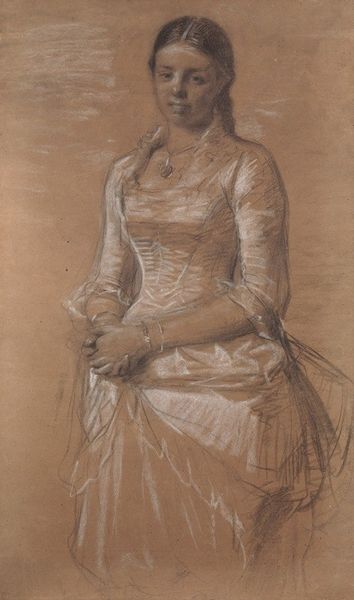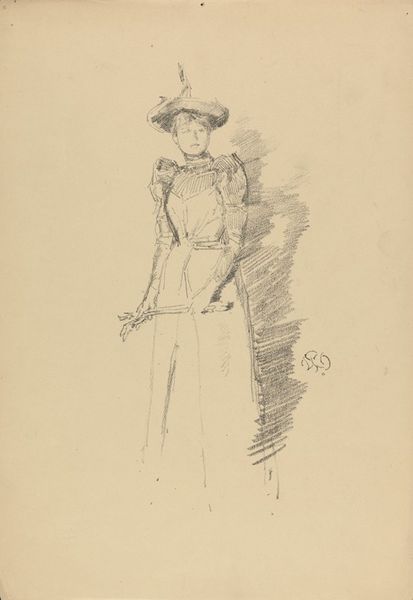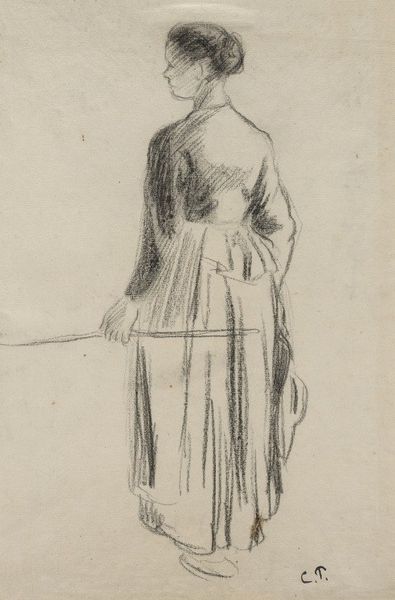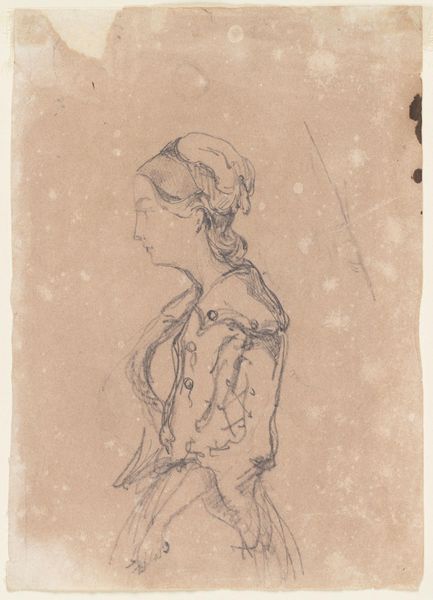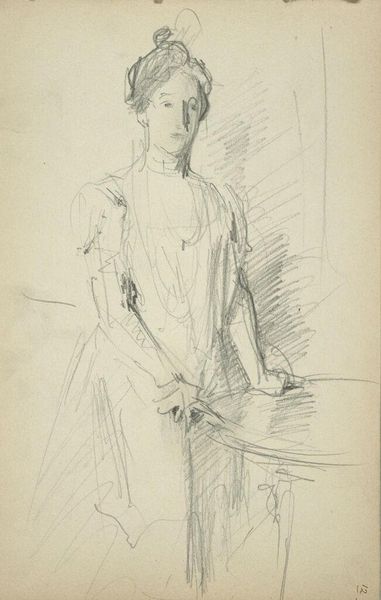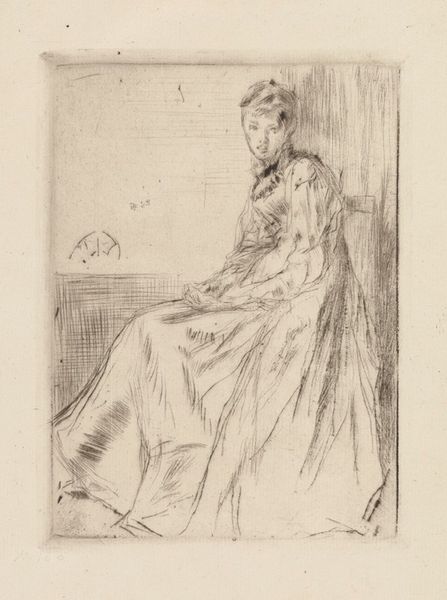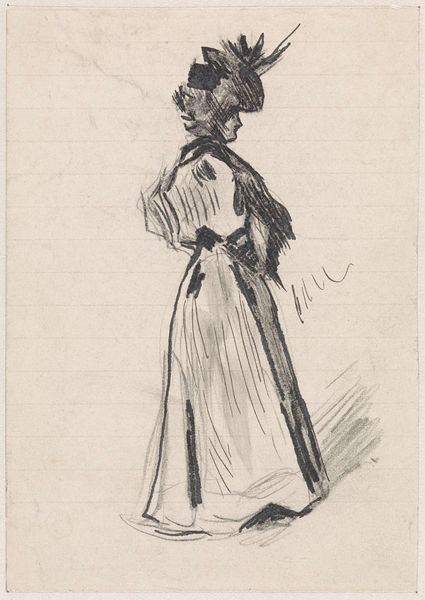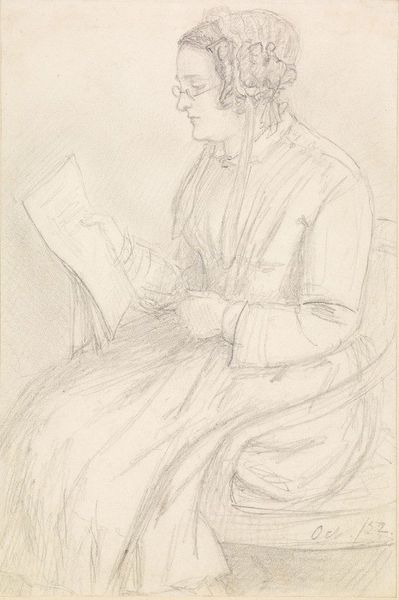
drawing, pencil
#
portrait
#
drawing
#
figuration
#
pencil
#
academic-art
Copyright: Public Domain: Artvee
Editor: This pencil drawing, "Femme assise," or "Seated Woman," is by Pierre Puvis de Chavannes. I find the loose sketch-like style really captivating. The woman appears confident, maybe even a bit austere. What can you tell me about this portrait in its historical context? Curator: Indeed. Considering its history, the drawing needs to be seen as a product of its time and the academic art traditions. Puvis de Chavannes was highly regarded in establishment circles. How might the institutions of art—academies, salons—have shaped both the subject and the style of this piece? Editor: That's a great point! The figure's posture and dress do seem very proper. Do you think this image may represent a societal expectation of women's decorum during that period? Curator: Absolutely. The very act of portraying her seated, composed, reflects the value placed on female virtue and composure within 19th-century social norms. Also, consider the drawing's function. Was this intended as a finished artwork or a study? That impacts our understanding. Editor: I see what you mean! If it were intended as a finished piece for display, wouldn’t it seem very unusual? But what did the public make of it, when they viewed his artworks? Curator: Early audiences of Puvis were drawn to his distinctive depictions and visual language that could have signified some familiar iconographies. His large works, in particular, resonated deeply in the public sphere. How do you think they were perceived then? Editor: Well, given what we now know about artistic expectations in those days, it would probably create controversy if Puvis de Chavannes didn't follow those cultural norms. This has completely altered my perspective on this artwork! Curator: Exactly! Viewing it through this cultural framework adds so much more complexity to this captivating image.
Comments
No comments
Be the first to comment and join the conversation on the ultimate creative platform.


